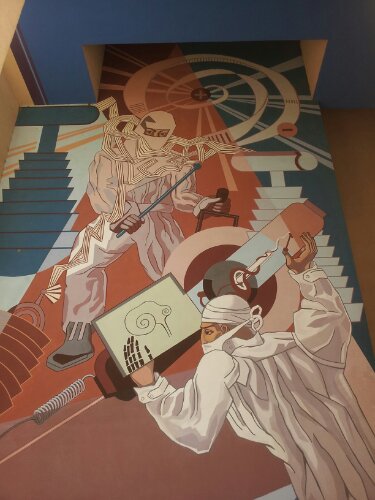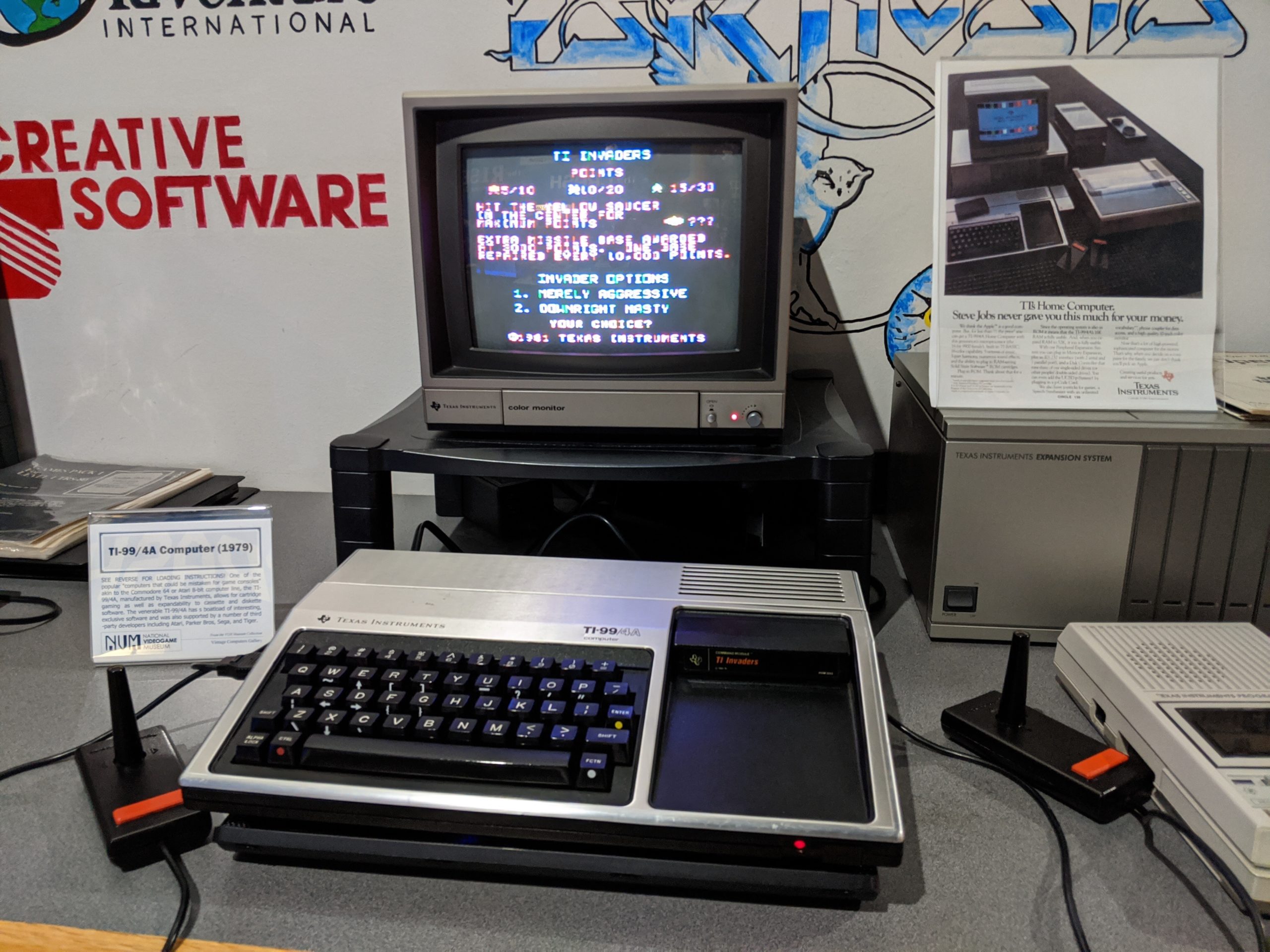
Thanks to a visit from an old friend (now Prof. Katherine Rawlins at the University of Alaska in Anchorage), we discovered the existence of and visited the National Video game Museum (NVM) last weekend. It was awesome. It was a tour of the computers and games of my youth; a reminder of how I got into computation in the first place; and a fun excuse to play old video games.
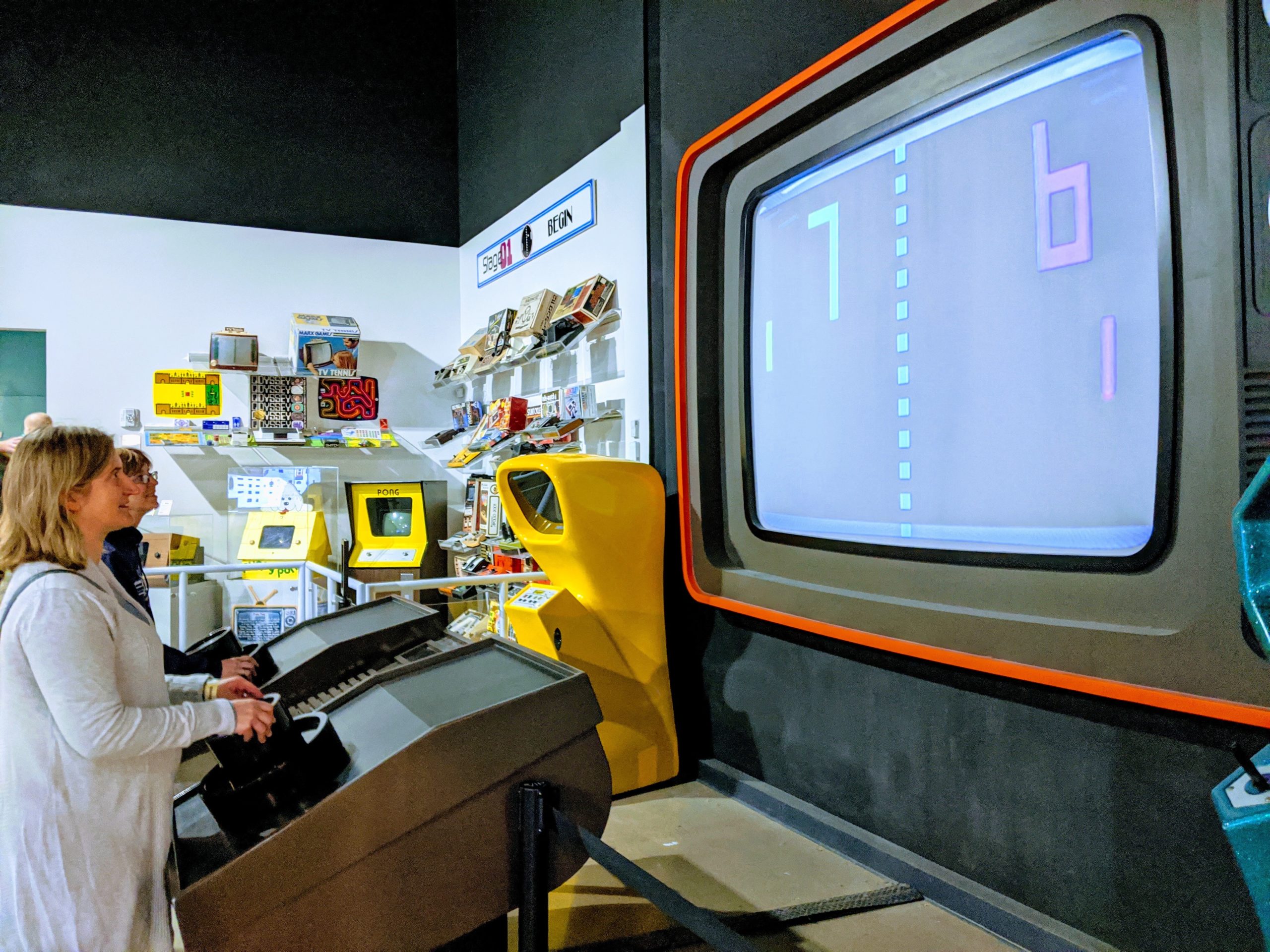
The giant “Pong” installation at the opening of the exhibits set the tone. A huge screen with paddles controlled by giant knobs made for a fun competition between pairs of people. What was particularly funny about this was our memory of Pong vs. the reality of Pong. We all seemed to recall that Pong was an easy game to play; but since it allows for the puck to have its momentum changed by rapid, transverse contact with a paddle, it can create difficult-to-predict trajectories for the puck. It was actually a harder game than we remembered.
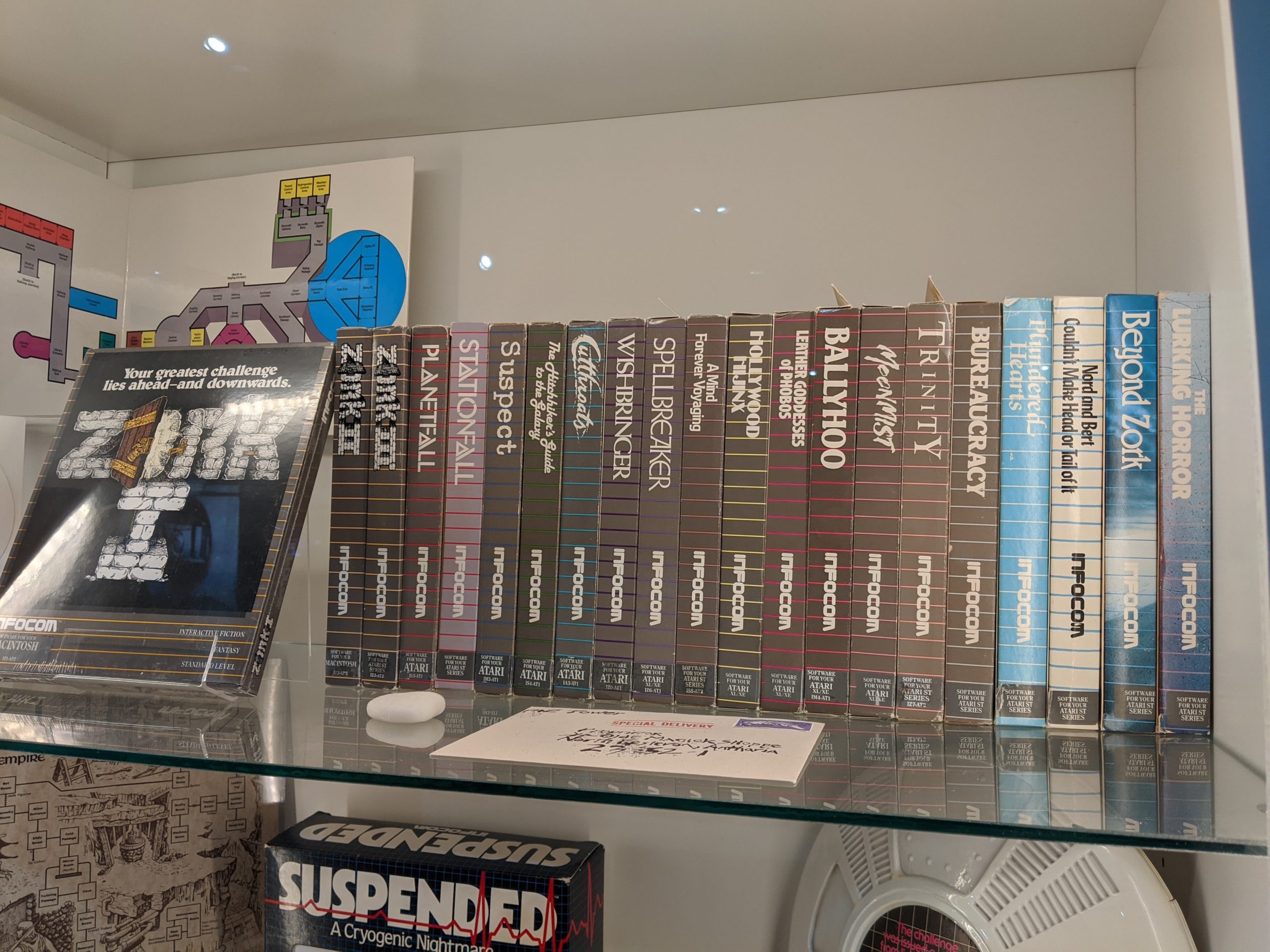
For me, the library of Infocom games made my heart light. I remembered hours playing “Zork” and “Cutthroat”. I loved stories, and having an interactive story with enemies and objects and puzzles and characters was enthralling as a child. When I later discovered open-source versions of “Inform,” the programming language used to generate many of these games, I was in love all over again. Inform is distinct in that you write in grammatical English sentences, with certain verbs having special meaning; the compiler transforms that into the interactive story, including how locations link together and how puzzles are to be solved. It’s a remarkable language.
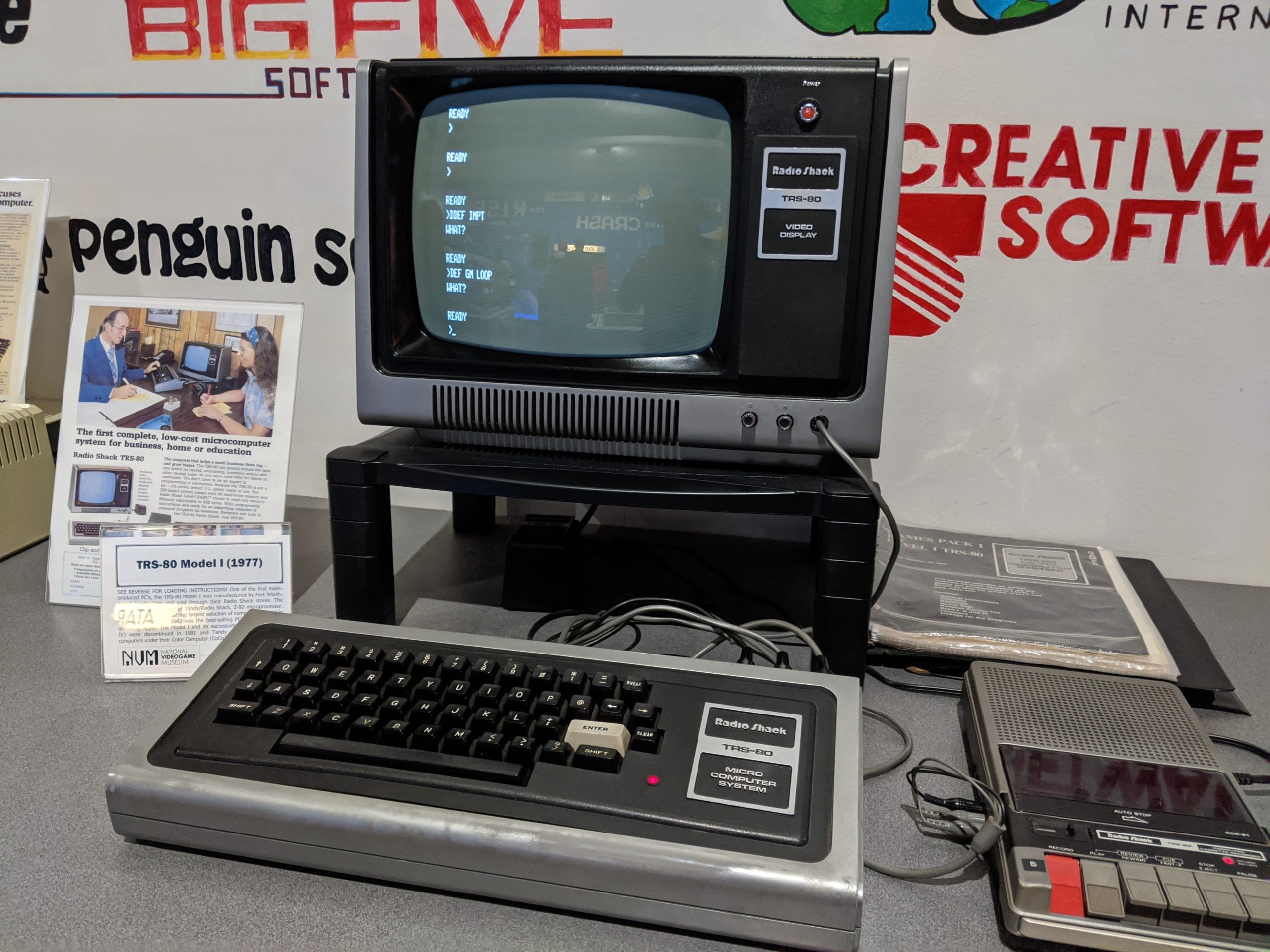
The TRS-80 was the first computer I remember us owning. The model on display here was complete with cassette tape storage unit for long-term saving of programs. I remember learning to program BASIC on this machine. That was the first programming language I ever learned. I also remember playing games with graphics on this machine, as well as games like Zork.
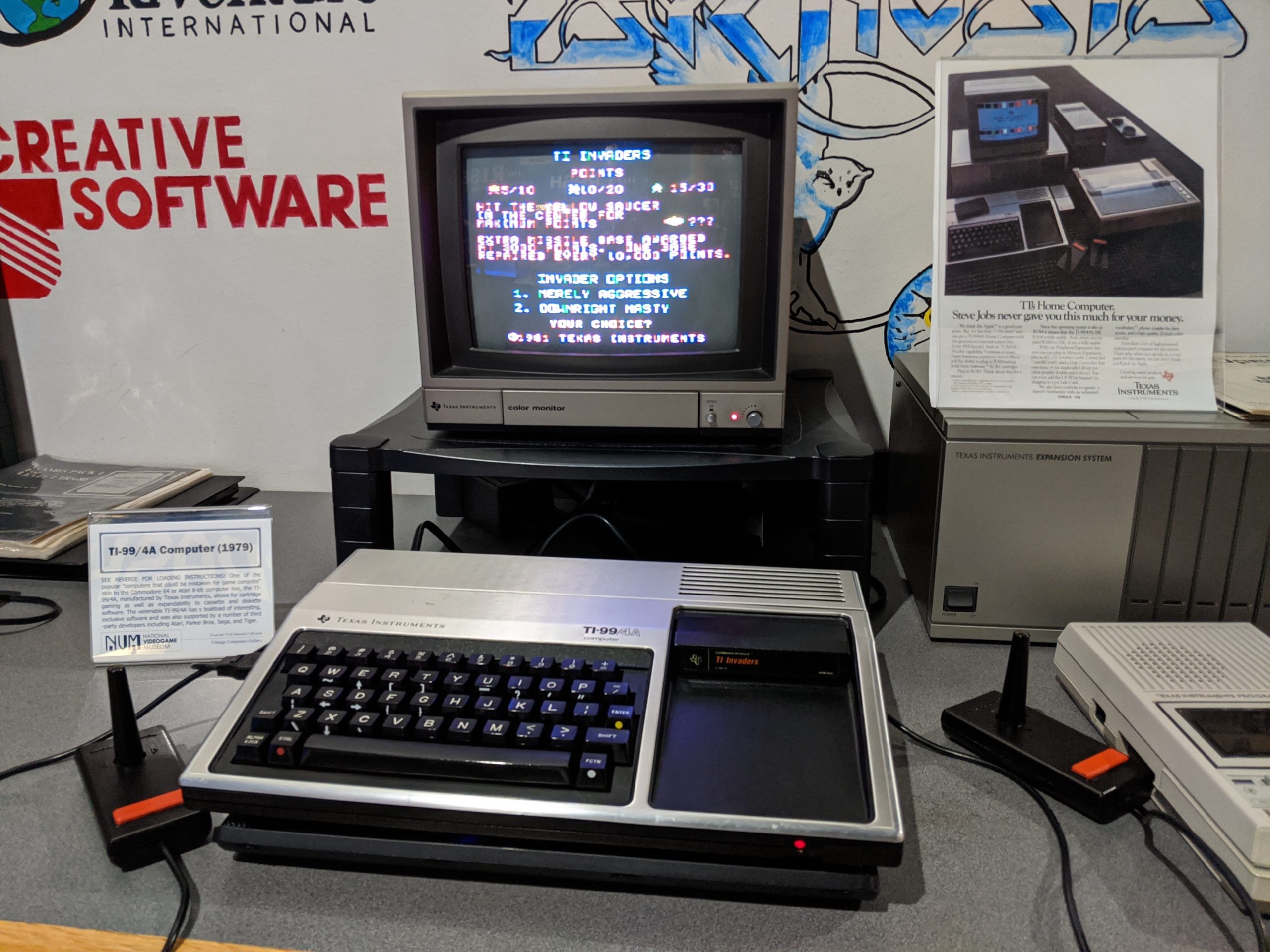
The TI-99/4A was the first computer I was gifted as a child. I received it one Christmas. I believe it was also the first color computer we ever owned. It plugged into the downstairs TV set. I continued using BASIC on this machine. In high school, I even once tried to numerically prove/disprove Fermat’s Last Theorem. That was probably the first computational mathematical exercise I ever undertook.
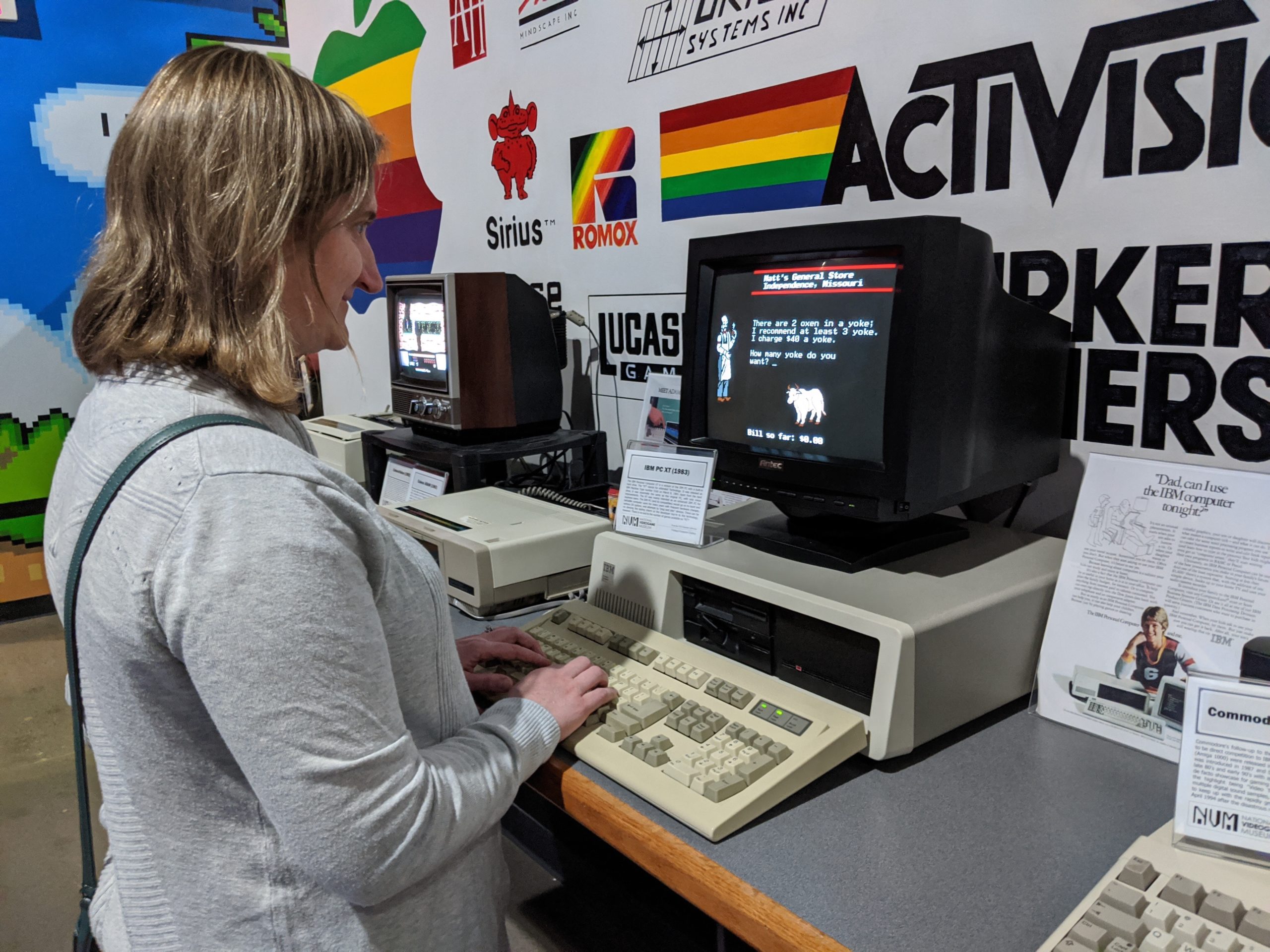
The Tandy machine was the first of what I would call the “modern PC” that we ever owned. It is familiar to my present preferred method of computing in that it had components that could be replaced and upgraded in-place. The hard drive in this thing is the size of a stack of paperback novels. It probably held 1 megabyte of data… maybe not even that much.
Jodi is depicted above playing “Oregon Trail,” which in her school was used at times as the basis of computer game learning exercises. We had something similar in our school system as well, depending on the teacher and the classroom.
Unfortunately, in her scenario, one of our “children” drowns while fording a river. Better than dysentery, I suppose…
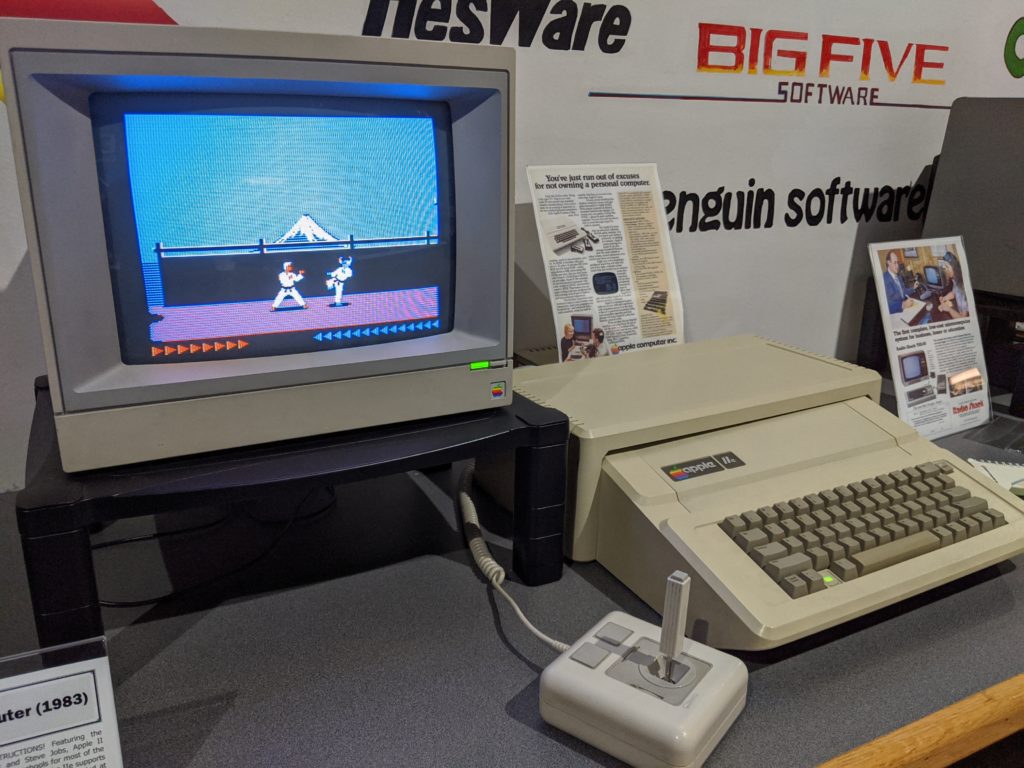
This image captures two important things from my past: the Apple II computer and the video game “Karateka.” I loved that game so much I wrote stories based on the characters in the game and illustrated them. This would have been in 5th grade, or thereabouts. One of my classrooms had an Apple II in it and I was sometimes allowed (maybe during recess?) to play on the computer. This was the first Apple computer I ever used. We briefly had access to a Macintosh, when they appeared on the market, but in general Apple computers never caught on in our household. They were expensive and, in the era of the upgradable PC and computer shows, not as simple to expand or upgrade.
Computers are integral to my work. I never knew until college that my interest and basic skills in fixing, building, and programming computers would be useful. Now, coding is essential to my work as an experimental physicist. Being able to play with hardware, and spin-up a new computer system, is essential for creating new technologies. It all began with computers and video games.



